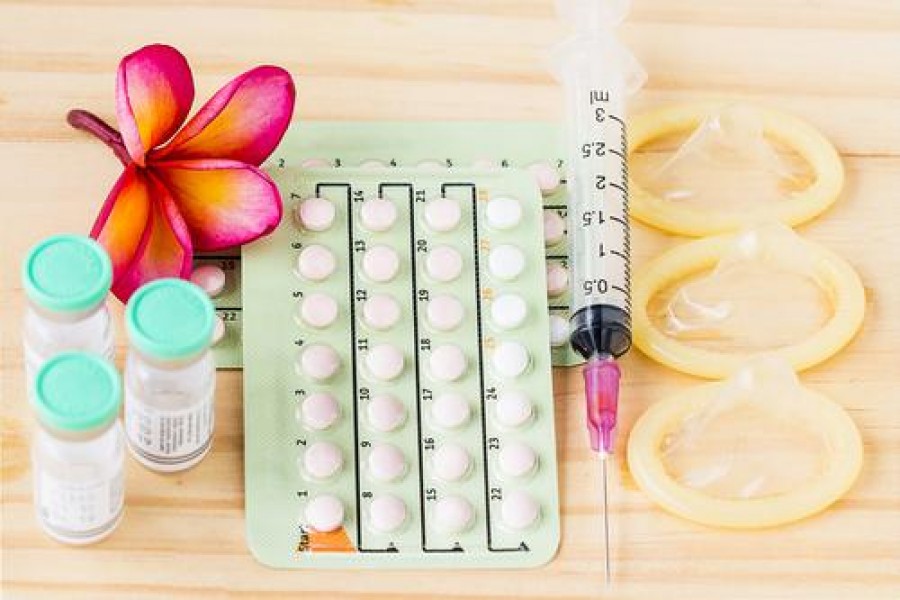Contraception Methods

Methods used by people to prevent pregnancy from taking place are called contraceptive methods. There are a number of methods available which people can and actually do use to achieve contraception. These methods are divided into different categories on the basis of the way in which they prevent pregnancy. Some of the methods of contraception are as follows:
Barrier Method
These methods prevent the male and female parts from meeting each other properly, thereby preventing pregnancy. Mentioned below are examples of such methods:
- Male Condom
- Female Condom
- Diaphragm
These methods of contraception are the least effective of all methods of contraception. Research tells us that such methods of contraception are effective 75-90% of the times. The table below shows the duration of effectiveness, action and side effects of each of the methods contraception:
| Barrier Methods of Contraception | ||
| Methods | Action | Side effects |
| Male condoms | Inhibits sperm penetration | allergy to latex |
| Female condom | Inhibits sperm penetration | Difficult to use |
| Diaphragm | A barrier | Difficult to use |
Hormonal Method
These methods disturb the normal processes of hormones in the body of females, thereby preventing pregnancy. Mentioned below are examples of such methods:
- Oral Contraceptive Pills also known as OCP’s
- Mini-pills, which are similar to OCP’s in function
- The Hormonal Patch
- The Injection also known as the Depo- Injection
- The Hormonal Ring
These methods of contraception are the very effective. Research tells us that such methods of contraception are effective 90-95% of the times. The table below shows the duration of effectiveness, action and side effects of each of the methods contraception:
| Hormonal Methods of Contraception | |||
| Method | Efficacy | Action | Side effects |
| Depo- provera injection | 3 months | Promotes menses | Weight gain, irregular bleeding |
| The patch (ortho Evra) | A week | Makes environment for menses | Clotting of blood (thromboembolism) in smokers & age over 35 yrs |
| The ring (Nuvaring) | Safe to use continuous | Suitable environment for menses | Discharge spotting |
| *OCPs (hormones combo) | Continuous use | Suppress ovulation | Daily compliance |
| Minipills (one hormone) | Continuous use | Thickens cervical mucus | Strict daily timings |
Device Method
These methods use devices to disturb the internal processes which occur inside the female body, thereby preventing pregnancy. Mentioned below are examples of such methods:
- Implants
- Mirena IUD- Intrauterine Device
- Copper IUD-Intrauterine Device
These methods of contraception are the most effective compared to other methods of contraception. Research tells us that such methods of contraception are over 98% effective. The table below shows the duration of effectiveness, action and side effects of each of the methods contraception:
| Device Methods of Contraception | |||
| Method | Duration | Action | Side effects |
| Implants | 3 years | Stops ovulation | Weight gain, Irregular periods |
| *IUD (Mirena) | 5 years | Causes inflammation of cervix | Spotting, Acne Uterine rupture |
| Copper T | 10 years | Causes inflammation of cervix & sperm killing effect | Cramps, bleeding |
*IUD-intrauterine device
Surgical Method
These methods make use of surgery/operation to prevent pregnancy. These methods are considered irreversible. Mentioned below are examples of such methods:
- Tubal Ligation: a surgery performed on females
- Vasectomy: a surgery performed on males
The table below shows the duration of effectiveness, action and side effects of each of the methods contraception:
| Surgical Methods of Contraception | |||
| Method | Duration | Action | Side effects |
| Surgery (ligation, vasectomy) | Permanent | —– | Ligation is irreversible Ectopic pregnancy |
Other Methods of Contraception
Less Effective Contraception Methods (Effective > 65-75%)
| Other Methods | |
| Method | Side effects |
| Withdrawal | No protection against STDs* |
| Spermicide Gel | No protection against STDs* |
*sexually transmitted diseases


